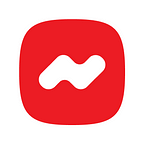The fundamentals of Mobile app UX design
As of 2022, the world has over 6.648 Billion smartphone users — and that number is set to climb by a few hundred thousand in the next year alone as the mobile app industry is projected to reach 7.33 billion by 2025, Forecast figures by Ericsson & The Radicati Group. What is evident is that the industry is growing and will continue to expand aggressively in the coming decade. Every company understands the value of a user-centric mobile app design, which is the foundation for the app’s usability and intuitiveness. This article addresses the foundations of mobile app UX design that can attract a large number of users. A brilliant idea isn’t enough to develop a successful app; mobile UX design is also important. It is not difficult to create an app, but planning it with user experience design requires time and work.
Mobile apps should appeal to the user’s intuition to guide them through the app.
Fundamentals of mobile UX design
Make Interface Elements Clearly Visible
Users frequently use mobile apps in dimly lit areas or in the glare of the sun. The key to good mobile apps is intuitive design, which allows users to execute activities in the smallest amount of time possible. Designers must always consider the viewpoint of first-time users, as well as how fast and easily they can grasp the app’s functionality and flow. Clarity teaches designers about which elements are essential and which are nice-to-haves that cause clutter. The goal is to keep things simple, and focusing on design clarity will help you do that.
Use Established Gestures
When a user learns a particular gesture, it becomes an integral part of his or her overall user experience. There’s a slim risk that this movement will be forgotten. One of the key benefits of gesture controls is that they reduce the number of steps and clicks required to complete a task in a mobile app. It takes a long time to delete an item by tapping it, browsing through the menu to find a relevant choice, and then clicking on it. It would take substantially less time to swipe that thing. The conversion rate will be higher if there are fewer clicks.
Design Clear and Consistent App Navigation
The ease with which consumers can learn how to utilize a mobile app is crucial. Users should be able to explore your app naturally using the clear pathways you’ve created. Using conventional navigation patterns seen in major operating systems, such as the Android navigation drawer and the iOS tab bar, is the best method to do this. The majority of customers are already familiar with these navigation patterns, and incorporating them into your design will allow users to move through your app fast. For consistency, stick to one navigation scheme throughout your program.
Create Seamless Animation/Transitions
To signify a state of transition, great mobile app designers use effective animation techniques across their products. It not only helps users intuitively comprehend the navigation mechanics of your app by adding life and character to the design, but it also allows them to recognize changes, swipe-throughs, and triggers of items. The usage of animation is an important aspect of the user experience. When it comes to transitions in mobile apps, there are numerous ways to communicate by utilizing animation. Sending the message, opening Settings, checking the box, and navigating to another page are examples of change. An animated transition is a great technique to reinforce the user’s action.
Typography
Typography is the art of organizing written text, point sizes, line spacing, and other features in a way that the user experience is pleasant and readable. It is a skill that allows designers to translate human interactions into long-lasting visual forms. Fonts in mobile apps must be instantly legible. Because mobile devices have significantly less capacity than PCs or tablets, you should avoid overloading users’ attention with information. Text on mobile devices must be at least 11 points tall to be legible at a typical viewing distance without the need to zoom in.
Salient Points
- Uncluttered and clear interface elements help the user a frustration-free experience.
- Using already established gestures helps the user perform tasks faster than clicking multiple times to get the same result.
- Consistent navigation through the app reduces confusion for the users
- Seamless and smooth animations and navigation can help the user understand that actions are taken in response to their inputs.
- Use of correct font, size, color, etc can guide users’ attention to perform the needed task without overwhelming them.
